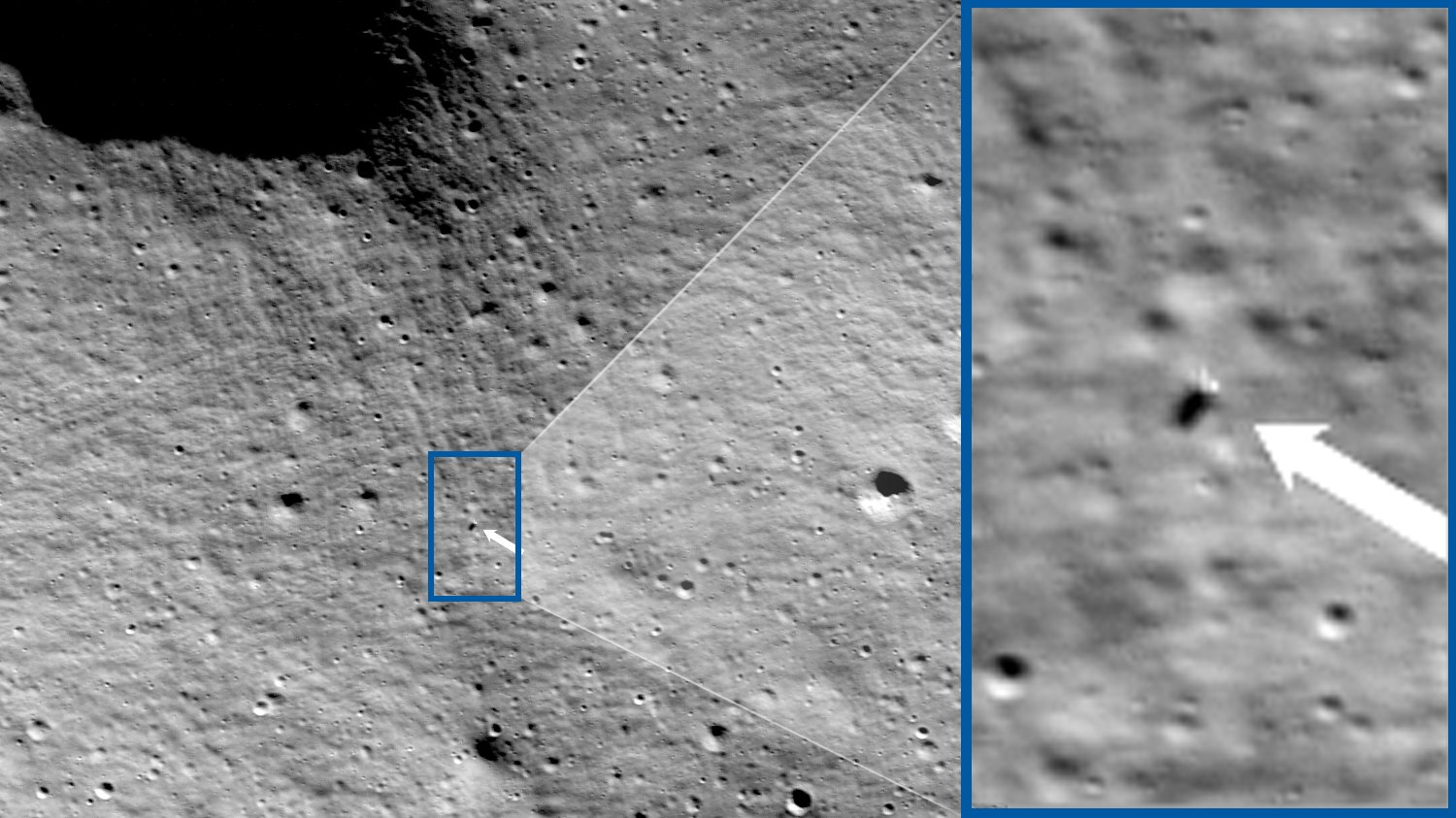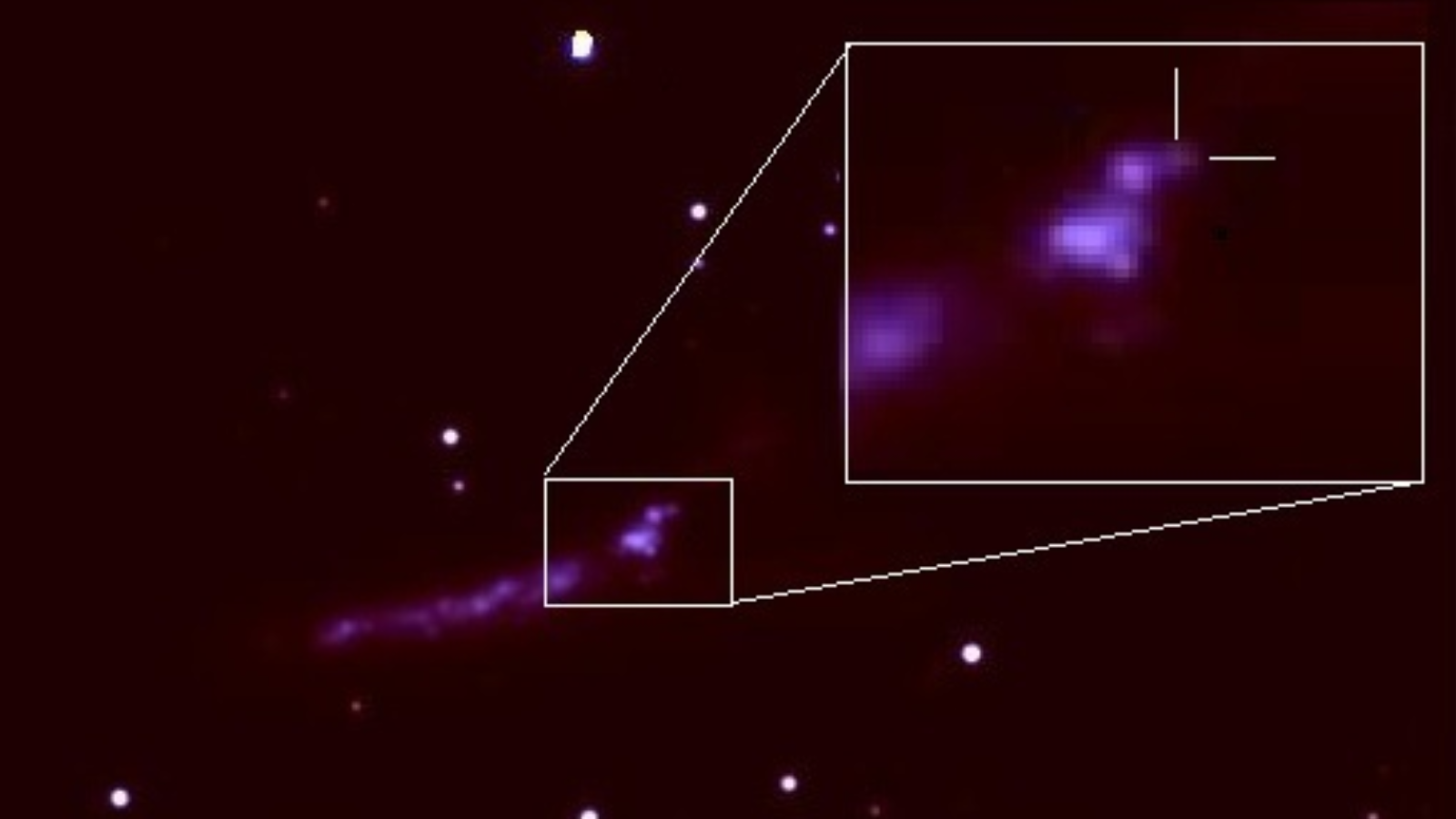Intuitive Machines' Odysseus moon lander beams home 1st photos from lunar surface
The first private moon landing just happened, and we now have some more updates on the achievement.
It has been four days since the first private moon landing took place, an event shrouded in a variety of emotions. We'll get into that in just a bit. First things first, a few hours ago, we got some brand new footage of the feat — as well as a sad but inevitable update on the lander's fate.
For a quick explanation, on Feb. 26, Intuitive Machines announced on X (formerly Twitter) that Odysseus is still communicating with ground control despite having gently tipped over on its side after a bit of a wonky lunar touch down. Better yet, Odysseus managed to send back a pair of images from the moon. One was taken as it approached its landing site, dubbed Malapert A, and the other seems to be the first close-up angle we've seen of the lunar surface.
It would also appear that NASA's Lunar Reconnaissance Orbiter, which has been scanning the moon from lunar orbit since 2009, caught sight of Odysseus (as it has done with many a moon lander before) from an altitude of about 56 miles (90 km). Dutifully, it beamed its birds-eye-view back to Earth. "Images from NASA's Lunar Reconnaissance Orbiter Camera team confirmed Odysseus completed its landing at 80.13°S and 1.44°E at a 2579 m elevation," Intuitive Machines explained in the X post. "After traveling more than 600,000 miles, Odysseus landed within 1.5 km of its intended Malapert A landing site, using a contingent laser range-finding system patched hours before landing."
Related: Intuitive Machines' Odysseus lander tipped over on the moon during 'spicy' lunar landing
However, in addition to this moon gallery, mission controllers offered a more practical update on the mission, too. "Based on Earth and moon positioning, we believe flight controllers will continue to communicate with Odysseus until Tuesday morning," the team said in a statement on the company website.
If you're a little dismayed by the quality of Odysseus' images (not LRO's, those are always surprisingly high-resolution), you can blame the complicated, almost twisty landing situation the lander had to endure on Feb. 22.
The drama
When the geometric Odysseus spacecraft arrived on the lunar surface, its achievement wasn't immediately met with cheer. The team was perplexed.
Breaking space news, the latest updates on rocket launches, skywatching events and more!
It was because the lander wasn't phoning home at first; even the company's public broadcast of the event was spotted with radio silence, nervous laughter and stalling. The estimated time of landing had passed, but where was the concrete proof that Odysseus didn't crash? Furthermore, tensions were heightened by a dramatic situation that'd happened just a couple hours earlier; Odysseus' laser rangefinders, meant to tell the spacecraft where it is and how fast it's going, stopped working. Engineers had to scramble to solve the problem as the issue arose just hours before the landing window opened — a window that was ultimately delayed due to the mishap.
Brilliantly, the team found a way to repurpose one of Odysseus' 12 payloads known as the Navigation Doppler Lidar for Precise Velocity and Range Sensing to act as the mission's new compass. In a sliver of good luck, the NDL had some laser software of its own that could serve as a substitute GPS.
Yet even when Odysseus finally sent back a communications signal, the signal was extremely faint.
Eventually, after looking into what's going on with the spacecraft, scientists were able to confirm that Odysseus was alive and well on the moon. However, they also realized Odysseus, somewhere on the road to landing, accidentally tipped over during its journey, ending up on its side. Per Intuitive Machines, this image of the landing, captured by a camera on the starboard aft-side of the lander, was taken approximately 35 seconds after Odysseus pitched over prior to touchdown.
All wasn't lost, as the team said there were science investigations onboard that could still be used. For instance, according to the Feb. 26 X post, "Hazard Relative Navigation algorithms detected nine safe landing sites within the targeted south pole region, which is an area that contains permanently shadowed regions that may be rich in resources, including water ice that could be used for future propulsion and life support on the moon."
Odysseus also seemingly got a bit stronger over time compared to its original delicate comms signal. Still, one major imagery component of the mission experienced a setback.
Originally, a camera dubbed EagleCam was supposed to deploy as Odysseus landed, capturing some spectacular views of the whole sequence. Yet, "the decision was made to power down EagleCam during landing and not deploy the device during Odysseus' final descent," Mike Cavaliere, Embry Riddle Aeronautical University's director of news and media relations, wrote in an update on Feb. 23. That's the university behind EagleCam's design. Cavaliere did, however, assure that EagleCam would be turned on for a photoshoot at a later date.
According to Intuitive Machines' latest update, the team has also confirmed that Odysseus represents "the furthest south any vehicle has been able to land on the moon and establish communication with ground controllers." This is a big deal because space agencies have been racing to get to the lunar south pole as of late, including the Indian Space Research Organization's Chandrayaan-3 and Russia's (failed) Luna-25 endeavor.
And at the end of the day, even with its hiccups, Odysseus is a lander that'll surely be going down in history. It's the first private spacecraft to reach the lunar surface and the first successful proof-of-principle for NASA's Commercial Lunar Payload Services program, meant to revolutionize the way we see lunar exploration's accessibility play out in the future. Alas, we'll soon need to say goodbye.
"Flight controllers intend to collect data until the lander's solar panels are no longer exposed to light," Intuitive Machines said in the X post. Without sunlight, Odysseus will be left to withstand the frigid lunar night — a night that most of our robotic explorers do not survive.

Monisha Ravisetti is Space.com's Astronomy Editor. She covers black holes, star explosions, gravitational waves, exoplanet discoveries and other enigmas hidden across the fabric of space and time. Previously, she was a science writer at CNET, and before that, reported for The Academic Times. Prior to becoming a writer, she was an immunology researcher at Weill Cornell Medical Center in New York. She graduated from New York University in 2018 with a B.A. in philosophy, physics and chemistry. She spends too much time playing online chess. Her favorite planet is Earth.



